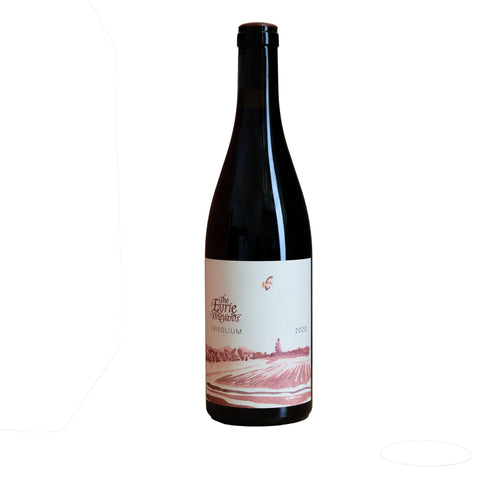
2020 Eyrie Vineyards "Trifolium", Dundee Hills, Willamette Valley, Oregon, USA
A light-bodied juicy wine with great acidity. Very aromatic nose with red fruit carrying into the palate. Crunchy tannins give structure to the playful fruit notes.
There are 3 units left in stock.
ABOUT THIS WINE
Pinot Noir 77%, Pinot Meunier 8%, Trousseau 15%
Trifolium combines all three of the red varieties grown on Eyrie’s 5 certified-organic estate vineyards. Farming is certified organic, but Jason and his team take this only as a starting point. Viticulture at all of the Estate vineyards follows the precepts of regenerative no-till farming, with strict attention paid not just to the vines but to the healthy networks of soil organisms that support them. Not only does this approach avoid the need for artificial irrigation, it also nourishes the vines without the need for additional fertilizer, and captures atmospheric carbon.
ABOUT THIS PRODUCER
Eyrie Founder David Lett was convinced that the climate of the Willamette Valley was potentially perfect for growing Pinot noir. But exactly where was the best place to put down roots? The Valley holds a wide range of microclimates and soils, and in 1965, David had the whole valley to choose from.
In February 1965, David rented a temporary nursery plot near Corvallis, and planted the 3000 vinifera grape cuttings he gathered from UC Davis and selected growers and brought with him to Oregon. This was the first planting of Pinot Noir and Chardonnay in the Willamette Valley, and the first “New World” Pinot gris. Over the following year, David went looking for his perfect vineyard site. He made an exhaustive review of regional climate and soil, studied historical climate records and soil maps, and criss-crossed the valley from side to side and top to bottom.
In the course of his explorations, David narrowed his search to the upper third of the Valley, pulling away from the foothills of the Cascades (too cool) and the Coast Range of the mid-Valley (too warm). After identifying the right climatic zone, the next challenge was soil. David kept a soil auger in the back of his car, and whenever he saw a likely-looking site for sale, he pulled over and dug a hole. He identified the volcanic Jory and Nekia soils prominent in certain valley hillsides as having the right combination of limited fertility and superior water-holding properties.
These soils were deposited as volcanic flows 15 to 17 million years ago. Over time, the surface of the basalt mother-rock decomposed into a red soil overlaying a deep layer of rounded and eroded basalt cobble. This combination gives Jory and Nekia soils special properties that are ideal for dry-farmed vines. The soil structure allows the constant winter rains of the valley to drain readily. However, in Oregon’s very dry summers, the underground cobbles retain enough water in their cracks and crevices to support the vines without the need for irrigation.
In addition to climate and soil, elevation and location were important. David sought a south or south-east facing site, with a sloped aspect sufficient to drain away damaging spring frosts. The elevation had to be high enough to access the volcanic soils of the slopes, but low enough for heat to ripen the grapes.
David kept returning to the Dundee Hills. In spite of the threat of suburban development, the area seemed just right for grapes. A remarkably consistent and concentrated outcrop of volcanic-origin soils, skirted at lower elevations with sedimentary ice-age soils, offered the perfect combination of climate and soil.
In 1966, David finally found what he was looking for – a gentle 20-acre south-facing slope at the south end of the Dundee Hills. That fall, David and his new bride Diana began the process of pulling out the old trees in the derelict orchard, preparing the ground, and moving the young grape plants up from their temporary nursery site.
Inspired by a pair of red-tailed hawks who made their nest (eyrie) in the fir trees at the top of the vineyard site, David and Diana christened their fledgling endeavor The Eyrie Vineyard. This original planting was the first of the five estate vineyards.
Details:
| Grape(s) | Pinot Noir, Pinot Meunier, Trousseau |
| Farming | Organic |
